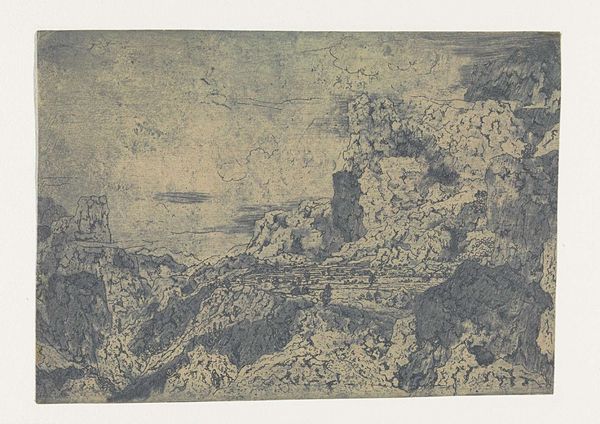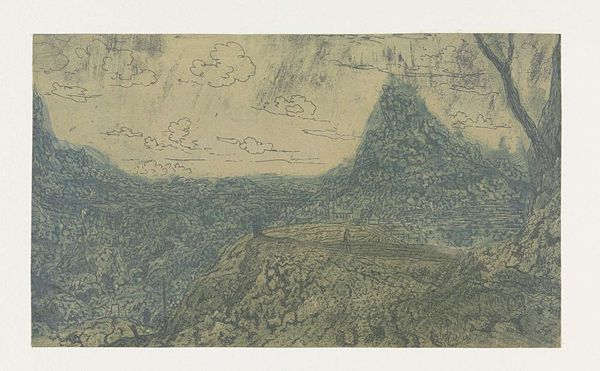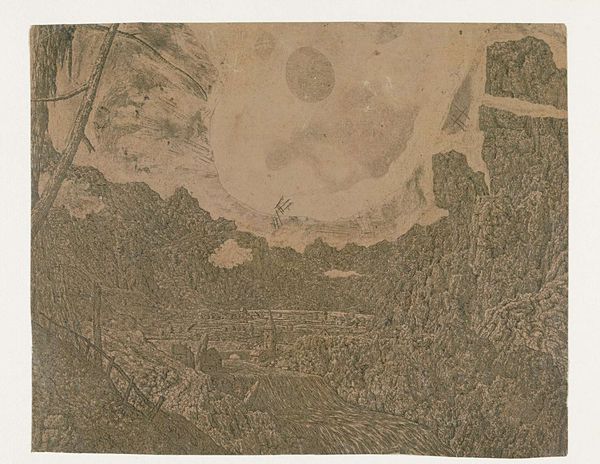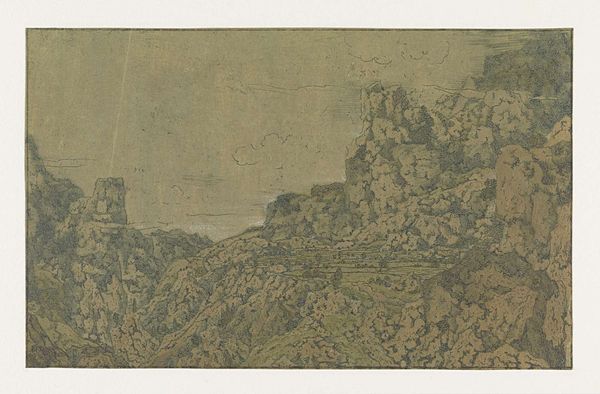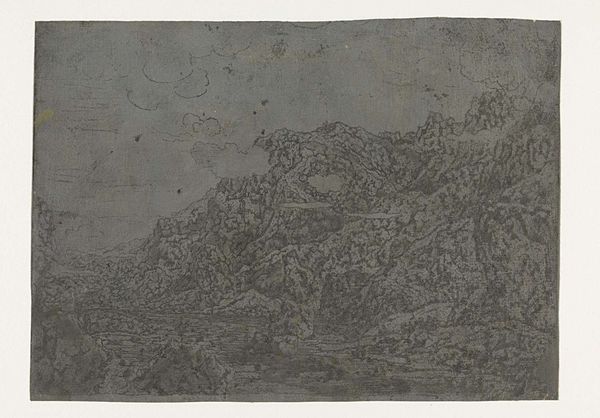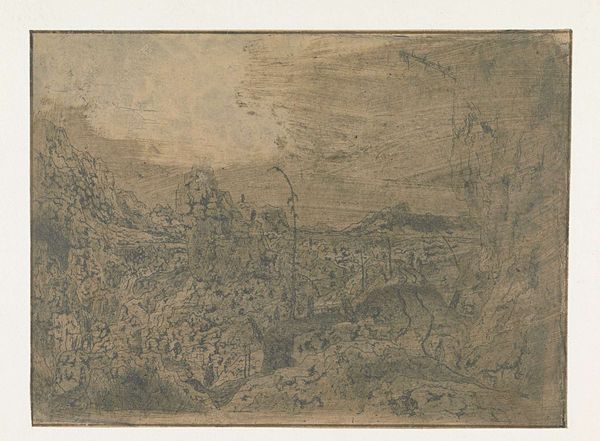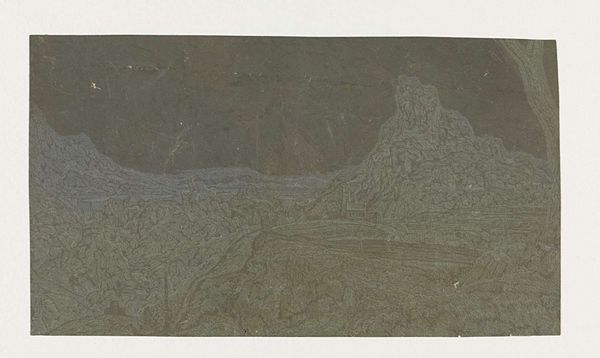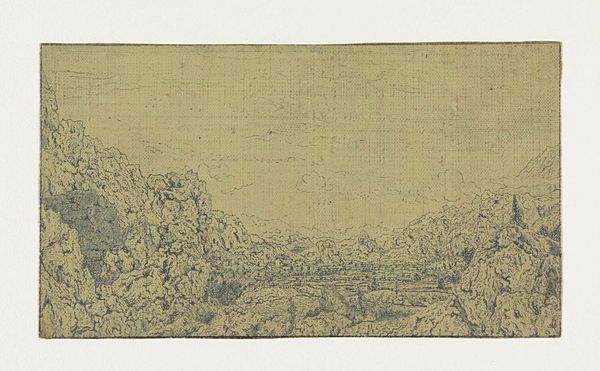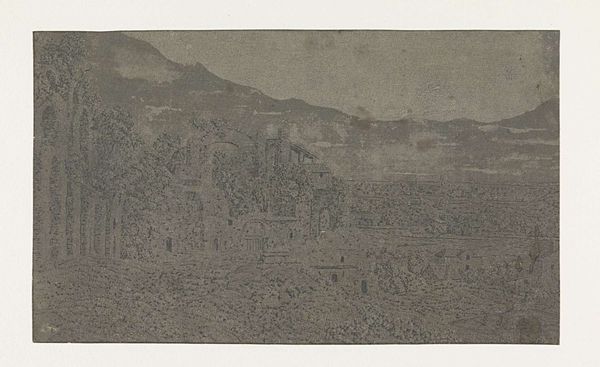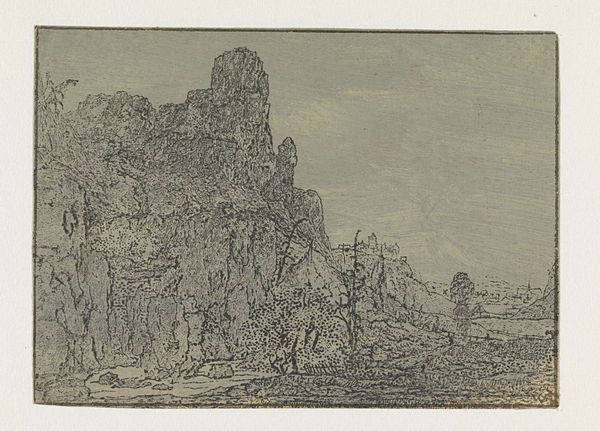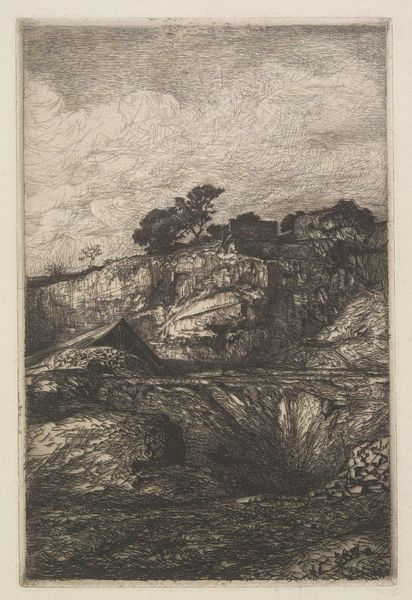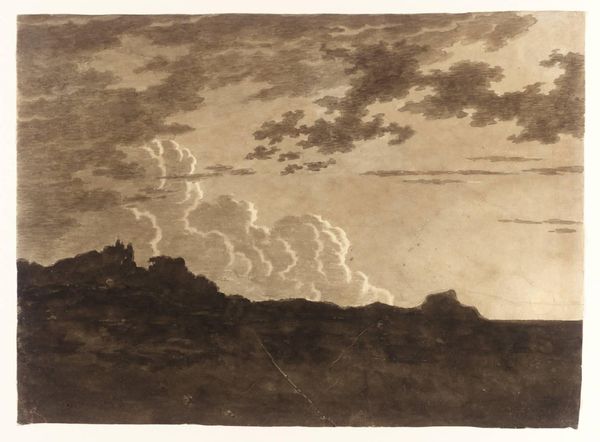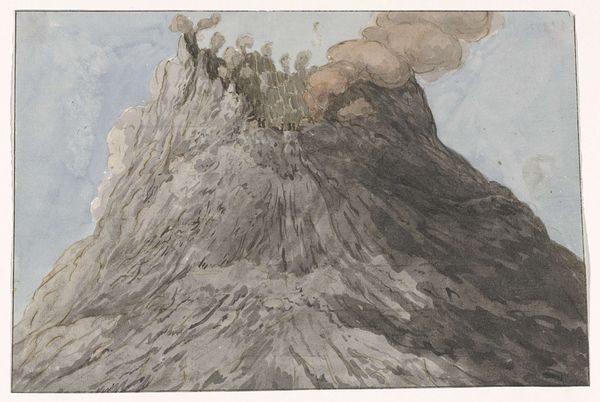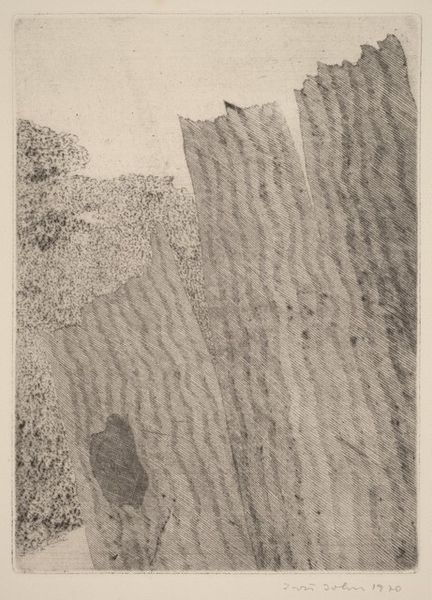
etching
#
etching
#
landscape
#
mannerism
Dimensions: height 126 mm, width 194 mm
Copyright: Rijks Museum: Open Domain
Hercules Segers created this artwork titled 'The Tomb of the Horatii and Curiatii' in the 17th Century. At its heart, we see ruins, nature reclaiming what was once a monument to human drama. The tomb itself evokes classical antiquity, specifically the Roman legend of the Horatii and Curiatii brothers, who fought to resolve a conflict between Rome and Alba Longa. Their story is one of civic duty, conflict, and sacrifice. The presence of ruins covered with dense vegetation speaks volumes. This motif appears in various contexts, from Romantic landscapes to vanitas paintings. Ruins symbolize the transient nature of human achievements, and the inevitable decay that time brings, while the encroaching nature suggests life's persistent force. This dialogue between ruin and nature reflects a deep, subconscious contemplation of mortality and resilience. The cycle continues. The image, etched into the collective memory, re-emerges, transformed yet retaining echoes of its origins, engaging us in an eternal conversation across time.
Comments
rijksmuseum about 2 years ago
⋮
Depicted is an ancient tomb on the Via Appia Antica at Albano. The sky is covered with light and dark blue oil paint. This colouration may not have been finished, and the ruins and vegetation were also still meant to be coloured.
Join the conversation
Join millions of artists and users on Artera today and experience the ultimate creative platform.
